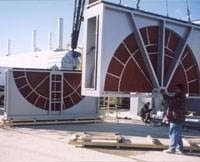4 Qualities to Look for in Your Next Environmental Partner
Leave a CommentNot all environmental technology providers are created equal. How do you ensure you make the smartest choice in such a significant relationship? Start by assessing these four qualities and asking the following questions to any potential environmental technology partner.
1. Engineering Experience and Expertise
 Like three legs of a stool, any potential technology partner should have a proven record of engineering experience across three key dimensions: company and employee legacy, industry and application depth, and global reach. A company with multiple planes of experience will ensure you are getting the best custom solution tailored uniquely to your application.
Like three legs of a stool, any potential technology partner should have a proven record of engineering experience across three key dimensions: company and employee legacy, industry and application depth, and global reach. A company with multiple planes of experience will ensure you are getting the best custom solution tailored uniquely to your application.
Questions to Ask:
- What is the depth of your engineers’ experience?
- How many successful installations do you have in my industry?
- Who will my project manager be, and can I meet them?
2. Quality Design and Manufacturing for System Reliability
Your selected environmental technology partner should have a proven process in place for design and manufacturing processes to ensure 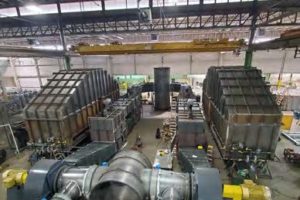 your equipment is not only delivered on time and on budget, but that it meets performance and compliance requirements.
your equipment is not only delivered on time and on budget, but that it meets performance and compliance requirements.
Questions to Ask:
- How is your fabrication process managed?
- What kind of Quality Assurance program is in place?
- What technology is leveraged during system design?
3. Integrated System Controls
When evaluating a potential partner, assess their in-house controls engineering capabilities and success record with integrating multiple equipment packages and process lines. Controls designs should be remotely accessible, resilient to downtime, account for safety and  compliance risks, be optimized for usability, and enable seamless integration into the existing facilities.
compliance risks, be optimized for usability, and enable seamless integration into the existing facilities.
Questions to Ask:
- How do your controls ensure safe, efficient, and reliable operation?
- What is your experience integrating abatement equipment and process lines?
- What remote connection capabilities are in place?
4. Robust Aftermarket Services Department for All Makes, Models & Manufacturers
A reputable partner should have an accessible aftermarket and service department to maximize system value through preventive and  predictive maintenance, spare parts, and emergency service. Consider the stability and vitality of any potential partner – being left without a service lifeline after a company goes out of business could leave you adrift and risk unplanned down time and compliance risk.
predictive maintenance, spare parts, and emergency service. Consider the stability and vitality of any potential partner – being left without a service lifeline after a company goes out of business could leave you adrift and risk unplanned down time and compliance risk.
Questions to Ask:
- Do you have a dedicated Aftermarket department?
- Do you offer 24/7 service support?
- Who will be servicing my equipment? Where are they based?
Anguil’s legacy of broad Industry Experience means our engineering experts are not pigeon-holed to a limited product portfolio to solve every application. Learn more about our System Design & Engineering capabilities and Contact Us to get started on a custom solutions specific to your application.
3 High Payback Oxidizer Retrofits for Lean Budgets
Leave a Comment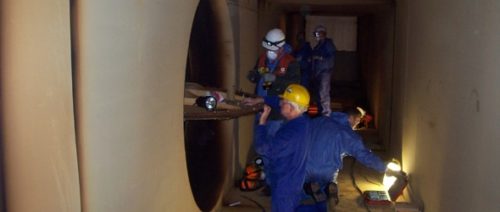
2020 has been the year many manufacturers have had to pivot into to the unknown. Your pollution control equipment must be considered as you make key business decisions. Whatever your new business landscape, Anguil is ready to assess your current equipment, production requirements, and capacities to develop a strategy that meets your emerging business needs.
Have you had to make any of these business decisions in 2020?
- Adding new process line(s) for expanded or new product offerings
- Consolidating production plants or building new facilities
- Speeding up process lines
- Changed process inputs
In the face of uncertainty and rapid change, strategic investment in your existing pollution control systems can keep you in compliance and offer opportunities for rapid return on investment (ROI). Instead of a new capital equipment purchase, consider retrofitting your existing equipment to fit tight timelines and lean budgets.
Here are three high payback equipment retrofits to consider.
Increase Capacity to Accommodate Production Changes
Add more flow to your existing oxidizer.
Anguil makes it easy to reimagine the possibilities of your pollution abatement equipment. If you have had to expand or consolidate production lines, you can retrofit your existing equipment to treat additional flow.
How to Evaluate Capacity Changes
Is the new flow over capacity of existing unit?
When evaluating capacity modifications, start by determining your current state and comparing it with the future.
- Confirm existing flow, VOC loading, and temperature to oxidizer
- Confirm new flow, VOC loading, and temperature to oxidizer
Can modifications be made to the existing unit to increase capacity?
Most of the time, the answer is yes. Review the VOC loading and confirm it does not exceed capacity of the unit type. Anguil’s engineering experts can help you confirm your capacity modification possibilities.
What components need to be upgraded to increase RTO capacity?
Once your capacity parameters are determined, several components need to be evaluated to accommodate the flow expansion.
- Upsize the Burner: Review burner system, fuel train, SFI
- Change Media Design: Review media bed design – size, depth, type of media, velocity, TER, and pressure drop, residence time
- Upsize Fan: Review fan/VFD sizing – flow, temp and pressure rating
- Add an Emission Concentrator: Reduce the flow to your oxidizer by concentrating large flows of low concentration air upstream of the inlet
Reduce Downtime with Controls Upgrades + Strategic Spares Management
Prepare for the unexpected with modern controls and critical spares
Like an insurance policy, the savviest oxidizer operators invest great care in preventive safeguards for resiliency in the face of unexpected downtime. Two high impact, low effort investments you can make to reduce downtime are oxidizer controls upgrades and strategically stocking your spare parts inventory.
Controls Upgrades
Because your oxidizer controls will generally function without incident even with older software and hardware, you may not consider them an upgrade or replacement priority. That is, until you experience a lengthy downtime due to a PLC crash or not having spares for an obsolete system.
Anguil has extensive experience consulting with operators on their oxidizer controls needs and developing custom solutions to prevent unplanned downtime, safety and compliance risks, and obsolete part headaches.
Are you ordering replacement control panel parts from Ebay? Or struggling to find support for your obsolete control components?
While obsolete parts may function, they expose you to many risks ranging from lengthy downtime to lack of service support. Because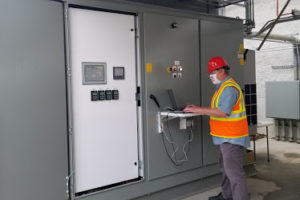 control components work together, a failed obsolete component might not be easily replaced and may require a full controls upgrade – a 12–16-week lead time. Many common controllers and I/O components will be discontinued in 2020, including control components installed on Anguil equipment manufactured prior to 2013.
control components work together, a failed obsolete component might not be easily replaced and may require a full controls upgrade – a 12–16-week lead time. Many common controllers and I/O components will be discontinued in 2020, including control components installed on Anguil equipment manufactured prior to 2013.
Answer: Anguil Aftermarket can help identify which components are slated to be discontinued by completing a Controls Review of your current installed components and make Controls Upgrade recommendations
Is your PLC or HMI exhibiting signs of vulnerability, such as program loss or failure?
A failed display can leave you blind when it comes to operating your oxidizer system safely. If this happens at an inopportune moment, you want to be prepared to download your HMI program to a replacement display from your spare parts inventory.
Answer: Anguil Aftermarket can perform PLC Upgrades, even if source code is unavailable. Our electrical and field service engineers will specify, supply, and install replacement hardware and supply and commission new software.
Are your oxidizer controls upholding your safety commitment?
Even if your system is using aging or obsolete components without issue, your system may not be meeting modern safety standards.
Answer: Anguil Aftermarket can review your program logic, make Operational Efficiency and Safety Improvements, and develop a custom solution.
Do you wish you had clearer insight into the workings of your oxidizer’s PLC? What if your oxidizer’s controls could be e
Hardware improvements such as a Human Machine Interface (HMI) Upgrade can provide better system control and visibility on machine operation and troubleshooting via improved graphics and diagnostics.
Answer: Anguil Aftermarket employs a user-friendly 10” HMI option that provides easy operation with a graphical overview with process values, loop bar graphs, trends, and I/O and purge interlock status. Additional upgrades such as Digital Chart Recorders and Remote Ethernet Access can unlock the full potential of modern oxidizer control technology.
Stocking Your Spare Parts Inventory
Why does my oxidizer spare parts program deserve significant attention?
- Uptime – The downtime associated with a system upset can be dramatically reduced if the right parts are immediately available on site.
- Compliance – Stocking an appropriate level of spare parts for your oxidizer system may be required by your envir
 onmental permit.
onmental permit. - Preparedness – Making the decision to have a well-stocked spare parts inventory could be the difference between having the needed component available in your stockroom to get your system quickly back online versus lengthy downtime, lost production revenue, and plant headache.
- Mission – Stocking an appropriate level of spare parts for your system is a vital step in a long-term commitment of environmental compliance.
How Does Anguil Determine my Recommended Spare Parts List?
Using your system process and instrumentation diagram (P&ID) and bill of materials (BOM), Anguil’s Aftermarket Experts can design a custom-tailored recommended Critical Spare Parts Package for you. Yes, we can do this for any oxidizer system regardless of manufacturer! Plus, we can supply parts for your ancillary equipment including scrubbers, concentrator wheels, and dust collectors. We tag each system component as falling into one of four categories: CRITICAL, RECOMMENDED, CONVENIENCE, and WHEN NEEDED.
| Level | Description | Examples |
| Convenience | Consumables not critical to system operation | Filter elements, door gasket |
| Critical | High-use and high-wear parts that are vital to system operation, parts that may have a long lead-time | Actuators, poppet valve components, thermocouples, flow sensors, and spark igniters |
| Recommended | These items are not typically known to fail; however, they cannot safely be bypassed if they do | Air proving switches, PLC components, and fuel train components |
| When Needed | Parts that are unlikely to fail or not generally critical to system operation | Burners, gauges, and flex joints |
What is a Critical Spare Parts Package?
A critical spare parts package bundles the most critical spare components for your system at a discounted price.
Why should I consider a Critical Spare Parts Package?
This convenient package takes the guesswork out of ordering spare parts and saves you money. In addition to meeting compliance requirements and strengthening your downtime firewall, we discount this package over the cost of ordering individual parts.
Why order spare parts through Anguil?
Anguil can simplify your parts procurement process. We know your system, so let us quickly get you the parts you need. If we don’t know your system, our engineering experts can quickly assess your system and determine your parts needs. Anguil has an expansive network of vendor relationships and enjoys priority service and advantageous pricing that we pass on to you.
Increase Thermal Energy Recovery (TER) for High Impact ROI
Improving TER with a media upgrade
Considering some enhancements to your RTO? Your RTO’s media is a key target area for high return on investment (ROI). Many operators consider media replacements primarily out of necessity due to plugging, but a lot of potential upside may be available by focusing on your media’s TER performance. Consider this:
- Up until recently, most RTOs were designed with 95% Thermal Energy Recovery (TER%) or less.
- Rule of Thumb for a self-check: If the average RTO outlet temperature is more than 100°F higher than the RTO inlet temperature, your actual TER% is probably less than 95%.
- Even a small increase in TER% can have a dramatic effect on RTO fuel usage. In some cases, a bump in TER% could eliminate RTO fuel use entirely.
- Advances in ceramic media have allowed Anguil to improve TER% in RTOs by only replacing a portion of the existing ceramic media beds, improving payback periods.
- Anguil has performed this retrofit on numerous RTOs, regardless of original manufacturer, and we offer free Savings Cost Analysis making it easy to get started.
How to Evaluate a Media Design Change
What is my current media design?
Start by determining your current state and comparing it with available possibilities. When evaluating your current media bed design, take note of the following:
- Type of media
- Bed dimensions
- Available space
What is my current media performance?
Next, determine your current process conditions to calculate your media’s current performance.

- Airflow
- Inlet temp
- VOC loading
- Combustion air from burner
- Current fan sizing and speed
What are my new design possibilities?
Look at different media suppliers and what designs are available. Important parameters to keep in mind
- Pressure drop across media beds – will it impact fan speed and possibly sizing?
- Total flow that needs to be treated – will it impact pressure drop and velocity through media?
How much savings can I expect?
The cost of your media retrofit versus your projected fuel savings will determine your ROI. For a free assessment and consultation, complete our Savings Cost Analysis. Upon submittal, an Anguil Aftermarket expert will contact you for a follow-up consultation.
As a custom solutions provider, Anguil’s team of experienced engineers will partner with you to understand your system, regardless of make, model, configuration, or manufacturer, tailoring your retrofit project to maximize system performance. Contact us to get started on your high impact retrofit project.
Anguil Expands Wastewater Treatment Offerings
Leave a CommentAnguil is announcing that we have signed an exclusive product licensing agreement with American Micro Detection Systems, Inc. (AMDS) of Stockton, California. Under the terms of the agreement AMDS will allow Anguil to exclusively present the REX product line to their Fortune 50 customers in the electronics space. The AMDS CEO Robert Keville stated that, “This agreement opens a new verticle market for AMDS products with substantial sales potential.” He further stated that, “The total market value to AMDS through this agreement will, over the term of the license and in aggregate, total tens of millions of dollars in revenue to AMDS. We are very excited about working with Anguil and having them as a sales channel partner.”
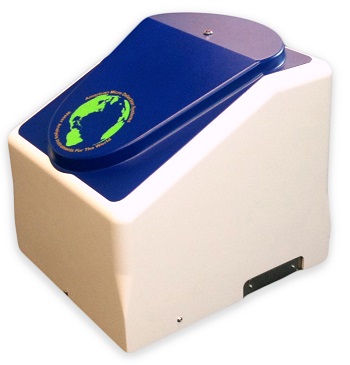 Christopher Anguil, President of Anguil stated that “As a provider of single-source, fully-integrated air and water treatment systems, we are always looking for ways to increase the value for our global customer base. By leveraging and integrating the REX capabilities into our client processes, we will be able to help our customers mitigate exposure to operational risk and costs. The analytical capabilities that REX adds, but moreover the speed with which REX delivers those results, will help some of our clients improve their process monitoring to minimize downtime and potentially reduce production losses.”
Christopher Anguil, President of Anguil stated that “As a provider of single-source, fully-integrated air and water treatment systems, we are always looking for ways to increase the value for our global customer base. By leveraging and integrating the REX capabilities into our client processes, we will be able to help our customers mitigate exposure to operational risk and costs. The analytical capabilities that REX adds, but moreover the speed with which REX delivers those results, will help some of our clients improve their process monitoring to minimize downtime and potentially reduce production losses.”
About AMDS
American Micro Detection Systems, Inc. (AMDS) is a privately held technology company located in Stockton, CA with research and development facilities in Livermore, CA. AMDS develops and markets world class analysis instruments specifically geared towards the water sector. AMDS manufactures innovative state-of-the-art, real time fluids analysis instruments that allow for autonomous monitoring of fluid flow streams at the source of interest. AMDS products serve any industry that utilizes water in their process from pulp and paper to agriculture to electronics to mining and oil.
For more information visit: www.anguil.com/aqua or contact Mr. Mike Munnagle, Director of Business Development at mike.munnagle@anguil.com.
Frac Water Recycling White Paper
Leave a CommentBalancing the risk of well damage with the economic benefits of frac wastewater reuse can be difficult. In conjunction with Environmental Daily Advisor, Anguil Environmental Systems has sponsored a detailed report which answers some of the tough questions about fracking and water use.
Minimizing Operator Risks While Implementing a Frac Water Recycling Program
- Why Recycle?
- Why isn’t recycling a widespread practice?
- How to manage the perceived risks of wastewater reuse
- What are the emerging technologies?
- What are the regulatory risks?
The reduced U.S. dependence on foreign oil and the increase in U.S. exports of natural gas are directly related to natural gas resources in the United States that have become more accessible through hydraulic fracturing. However, companies have come to realize that due to the amount of water needed in the fracking process, the use of freshwater is unsustainable. Recycling frac fluids would not only mitigate the need for freshwater, but would also provide an alternative to the costs and problems of disposing of wastewater.
Concerns that the use of recycled frac fluids would damage wells have held operators back from embracing recycling even though recycling has proven to be much less expensive than using freshwater. However, major operators are demonstrating that certain frac fluids that are recycled properly do not damage wells, making recycling increasingly attractive to operators.
Contact us for copy of the report to learn this and more about the evolving landscape of hydraulic fracturing.
New Clean Air Techniques for Carbon Fiber Processes
Leave a Comment As a material, carbon fiber has fundamentally changed many of the products we use every day, making them lighter, stronger and more durable. The manufacturing process is typically unique to each supplier and it can be as complex as the fiber molecules themselves. Equally as challenging are the air pollution control systems used on the production equipment. This year, two institutions have rolled out new processing techniques that utilize different, yet highly effective air pollution abatement technologies that also drive down production costs.
As a material, carbon fiber has fundamentally changed many of the products we use every day, making them lighter, stronger and more durable. The manufacturing process is typically unique to each supplier and it can be as complex as the fiber molecules themselves. Equally as challenging are the air pollution control systems used on the production equipment. This year, two institutions have rolled out new processing techniques that utilize different, yet highly effective air pollution abatement technologies that also drive down production costs.
When the first conversion plants came online, operating costs were not critical design parameters and neither were the environmental effects of production. Today, the manufacturing of carbon fiber is heavily regulated by the environmental community and producers are continually looking to reduce energy demands of this heat intensive process. The oxidation and carbonization furnaces and industrial ovens have the potential to emit hydrogen cyanide (HCN), ammonia (NH3) and volatile organic compounds (VOCs). Some of these pollutants are immediately dangerous to human health, even in very small quantities. Other pollutants of concern for carbon fiber producers include harmful gases such as carbon monoxide (CO) and nitrogen oxide (NOX). These emissions not only contribute to global warming but also have a direct correlation with the manufacturer’s consumption of energy.
Recycling at the Forefront
The strength, durability and light-weight characteristics of carbon fiber make it perfect for many manufactured products like airplanes and automobiles. However, most waste ends up in landfills where those same attributes do not allow the carbon fiber to break down like other organic material. A major university has opened a new, state of-the-art facility dedicated to the reuse of this valuable resource.
In conjunction with industry partners, they have developed a pilot scale carbon fiber recycling plant. The team set out to develop and commercialize recycled fiber that maintains the material strength at a cost-savings to manufacturers using carbon fiber in their products. The result was a lightweight, low cost material made from recycled carbon fiber that gives users a competitive advantage over virgin carbon fiber.
The university knew that an air pollution control device would be necessary to meet the local emission requirements for hydrogen cyanide (HCN) and ammonia (NH3). They also realized that there was the potential to reuse some of the energy released during the combustion of these carbon fiber processing emissions.
Anguil Environmental Systems (Anguil) was selected to provide the air pollution control system. Their experience with similar applications and ability to make a custom designed system to meet the unique needs of this pilot-scale recycling facility were the primary determining factors. Anguil manufactured, installed and recently brought online a Thermal Recuperative Oxidizer with dual heat recovery.
A metallic heat exchanger within the oxidizer reduces the amount of supplemental fuel required to bring the process emissions up to combustion temperatures. In addition, a secondary heat recovery system downstream of the oxidizer captures nearly all of the remaining heat for process heating needs. The extremely efficient system drastically reduces the operating costs of the carbon fiber manufacturing process. In addition, the Anguil oxidizer has been achieving over 99% destruction rate efficiency.
A Technology Transfer in the United States
Recognizing the need for this industry to develop a lower cost carbon fiber material, The United States Department of Energy built a custom designed conversion process at Oak Ridge National Laboratories (ORNL). The process equipment, designed by Harper International, makes this one of the most sophisticated and capable facilities in the industry. The carbon fiber technology line in Oakridge, Tennessee allows commercial partners to test the scalability of emerging carbon composite materials before commercial production.
To treat the exhaust streams coming from the carbon fiber process, Anguil Environmental Systems was commissioned to design, manufacture and install a multi-stage Direct Fired Thermal Oxidizer (DFTO). The abatement system is capable of destroying nitrogen compounds without the formation of NOX which is a typical by-product in conventional oxidation processes. Gases move through zones within the DFTO under varying conditions where the total emission destruction efficiencies are over 99% with minimal NOX generation.
Even though this application does not warrant additional NOX reduction, the Anguil DFTO has the capability of adding Selective Non-Catalytic Reduction (SCNR) to further reduce the environmental impact.
Anguil Environmental is a system provider of air pollution control and energy recovery solutions. We are intimately familiar with the capture, control and compliance hurdles of the carbon fiber industry. View our Carbon Fiber page for more information.
New Service Resource for Oxidizer Operators
Leave a CommentOn a yearly average, Anguil services oxidizers made by dozens of different manufacturers. Put that knowledge to use for you by registering your oxidizer system(s) with Anguil and get a unique Service ID!
Participants in this program receive periodic maintenance recommendations, energy saving tips and service ideas for keeping your oxidizer running effectively and efficiently. In addition, your Anguil Service ID will streamline future service requests and scheduling.
As an added bonus you will immediately receive an Anguil hat, flash drive and pen! Future benefits may include complimentary operating cost evaluations and discounted service pricing.
Click Here for the Machine Registration Page
Beacon – Waste Gas Treatment Technologies for Carbon Fiber Processes
Leave a Comment![]() In conjunction with Harper International, Anguil Environmental announced the launch of Beacon™, a ground-breaking new program offering Carbon Fiber manufacturers the ability to evaluate the carbon footprint of their manufacturing process and identify opportunities for improvement.
In conjunction with Harper International, Anguil Environmental announced the launch of Beacon™, a ground-breaking new program offering Carbon Fiber manufacturers the ability to evaluate the carbon footprint of their manufacturing process and identify opportunities for improvement.
With its extensive experience in the industry since the market’s inception, Harper has developed a model that analyzes various plant configurations and capacities, precursors, integration scenarios and energy recovery options and ranks the environmental impact of the process line. This endeavor establishes a baseline and a facility-specific metric that can be used to develop improvement plans to drive greater energy recovery and lower operating costs.
Anguil is excited to announce our participation in the Beacon as it pertains to the destruction of Hydrogen Cyanide (HCN), Ammonia (NH3), Silicone and Nitrous Oxide (NOX) emissions often produced in the ovens and furnaces of carbon fiber and composite plants. We design, manufacture, service and install energy-efficient oxidizer systems designed specifically for the air toxins that are often produced in the ovens and furnaces of carbon fiber manufacturers. Our company is intimately familiar with the capture, control and compliance hurdles that the processing plants face.
“The Carbon Fiber industry is at a critical maturity point where we must focus on achieving greatest output cost effectively with environmental responsibility in order to secure adoption in future market applications such as in automotive,” commented Robert Blackmon, VP of Integrated Systems at Harper.
The Beacon program is the only offering that comprehensively examines energy utilization in detail and develops solutions for improvement. We expect many to be inspired by this innovation, however Harper is clearly leading the way.”
A new website, harperbeacon.com , also launched as a part of the program. On this site, users can experience the concept of Beacon with a preview survey that evaluates the carbon footprint in a short example model. The complete Beacon model is a complex analysis of over a hundred design parameters. This work expands upon Harper’s previous cost modeling providing insight into the impact of energy efficiency as a part of the overall cost of operations.
Join Our Oxidizer Group on LinkedIn
Leave a CommentThe purpose of this subgroup is to specifically discuss the different oxidizer types, design criteria, performance data and service issues. The goal is to better educate oxidizer end users, consultants and engineering firms on the capabilities and best practices of these air pollution control devices.
Anguil & Canmaker JL Clark Teamwork Highlighted in The Canmaker Magazine
Leave a Comment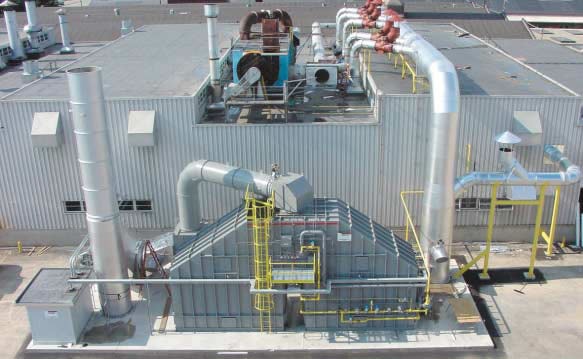 This is how J L Clark exceeded the US EPA’s VOC abatement requirements at its Rockford, Illinois, litho plant: a PLC controlled RTO from Anguil Environmental Systems
This is how J L Clark exceeded the US EPA’s VOC abatement requirements at its Rockford, Illinois, litho plant: a PLC controlled RTO from Anguil Environmental Systems
Canmakers in the US are increasingly concerned about the need to comply with regulations issued by the Environmental Protection Agency (EPA) on air quality, specifically volatile organic compound (VOC) and hazardous air pollutant (HAP) control.
Last November the EPA issued a final rule that established national emission standards for coating operations in regions that generated large volumes of VOCs. The standards (5,700 litres or 1,500 gallons of coatings per year) outline various control requirements based on usage of affected VOCs but also provide for emission reduction by using a capture system in conjunction with pollution control devices.
With legislation looming on the horizon, Rockford, Illinois-based lithographer and canmaker J L Clark last year began a thorough review to find a system that would exceed the minimum EPA requirements cost-effectively. “This was not the first time that J L Clark had taken steps to control their emissions,” said Gordon VerWeyst, J L Clark’s vice president of product development & engineering.
“Years earlier, the company had installed several recuperative thermal oxidiser (RTO) systems that had satisfied earlier requirements but had, over the years, become outdated and were a significant drain on the plant’s operations budget. Costs to operate the systems had become a major component of J L Clark’s annual fuel usage.”
J L Clark chose Anguil Environmental Systems, based at Milwaukee in Wisconsin, to supply a bigger 50,000 scfm regenerative thermal oxidiser to control the emissions, and a permanent total enclosure (PTE) to capture the emissions from the plant’s six printing and coating lines.
The RTO destroys VOCs with high temperature oxidation, converting them to carbon dioxide and water vapour, and reusing the released energy. Anguil’s vice president of sales & marketing, Chris Anguil explains how it works: “Process gas with VOC contaminants enters the two chamber RTO through an inlet manifold. Aflow-control valve directs this gas into an energy recovery chamber which preheats the process stream. The process gas and contaminants are progressively heated in the ceramic bed as they move toward the combustion chamber.
“The VOCs are then oxidised, releasing energy in the second ceramic bed, thereby reducing any auxiliary fuel requirement. The ceramic bed is heated and the gas is cooled so that the outlet gas temperature is only slightly higher than the inlet temperature. The flow-control valve switches and alternates the ceramic beds so each is in inlet and outlet mode.
“If the process gas contains enough VOCs, the energy released from their combustion allows self-sustained operation. For example, at 95 percent thermal energy recovery, the outlet temperature may be only 77 deg F (25 deg C) higher than the inlet process gas temperature,” he says.
PLC-based electronics automatically control the RTO’s operation, from startup to shutdown, reducing the necessity for operators to be involved.
Meanwhile, the permanent total enclosure contributes significantly to the reduction in VOCs released to the atmosphere.
VerWeyst says: “We selected the PTE system because it enabled our litho lines to run without individual burdensome enclosures and exhaust hoods over each line. This allowed the operator’s room to do their job without interference. The PTE also allowed us to forgo the yearly EPA capture inspections that are required on a singularly captured line.”
Adds Anguil: “The PTE at J L Clark has proven effective at capturing the emissions from the wet-end coating operations of the process lines: that exhaust is combined with the exhaust from the ovens at the inlet of the RTO. This results in 100 percent capture efficiency of the VOC/HAP emissions assuring capture efficiency requirements and eventual destruction.
“The RTO itself has proven to be similarly effective, achieving destruction efficiency in excess of 99 percent while exceeding all fuel usage reduction objectives. The combined capture and destruction efficiency has therefore exceeded 99 percent for the facility, minimizing the overall VOC/HAP emissions from the plant and allowing it to meet their emissions cap,” he says.
Originally published in October of 2004 in Canmaker Magazine.

